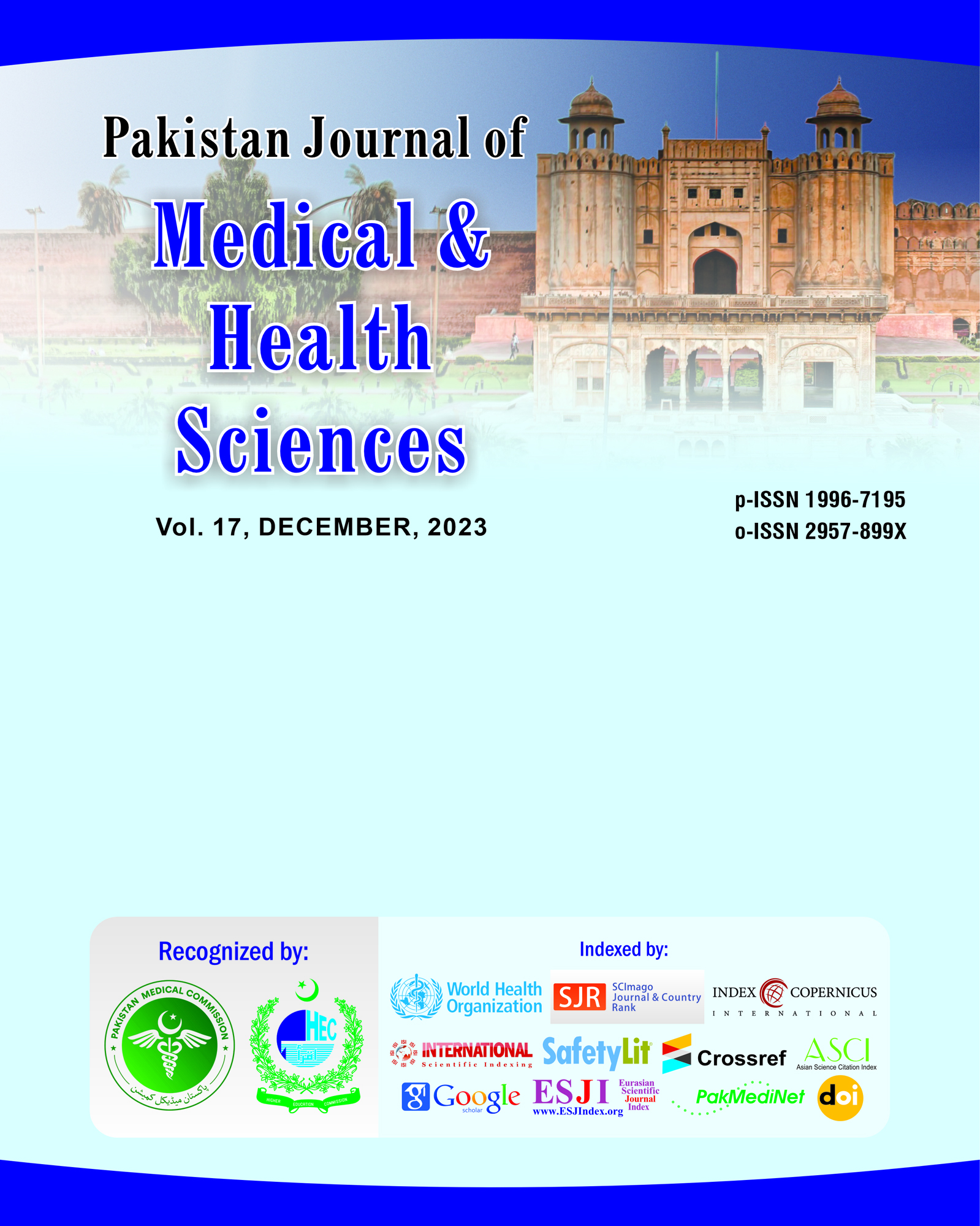Incidence of High Spinal after Institution of Spinal Anesthesia for Caesarean Section in Divisional Headquarter Teaching Hospital Mirpur AJK
DOI:
https://doi.org/10.53350/pjmhs020231712202Abstract
Background: The recognized side effect of spinal anaesthesia is a high or total spinal block. It might be challenging to define what a high spinal is. Clinical block that is far higher than what is needed for surgical anaesthesia may be deemed "high" block, although in the absence of serious consequences (such respiratory impairment or bradycardia), this would be seen as a physiologic outcome. Complete spinal block is not well defined. Complete or total anaesthesia refers to a block that extends above the cervical spine (such as brain stem and cranial nerves).
Objective: To identify the frequency of high spinal anesthesia in cesarean section parturients to improve the quality of spinal anesthesia in parturients and to prevent the possible morbidities, mortalities and ensuring efficient management of high spinal anesthesia.
Study Design: Cross-sectional study
Place and Duration of Study: Department of Anesthesia, Divisional Head Quarter Teaching Hospital Mirpur AJK from 1st June 2022 to 30th November 2022.
Methodology: One Hundred parturients for cesarean section of ASA-I were included. After pre-loading and following aseptic measures, spinal anesthesia was administered inrathecally to the parturients using Bupivacaine Spinal 15mg in L3-L4 intervertebral space in sitting position. After institution of spinal anesthesia, parturients were immediately brought to supine position and essential monitoring (SPO2, Heart Rate, Pulse, Blood Pressure) were attached. Generalized insignificant drop from baseline in BP, HR and Pulse was observed in parturients with exception of 4 parturients in which profound drop in BP, HR, Pulse and SPO2 was noticed indicating High Spinal Anesthesia. Level of sub-arachnoid block was confirmed by loss of temperature sensation (sensory block) by wet swab above T4 level. Immediate management which included oxygen supplementation, use of colloids (Gelofusine 500mL), slight reverse trendelenburg position, Atropine (Boluses of 0.5mg) and Phenylephrine (Boluses of 50-100mcg) was done as per protocol. In 5-10 minutes, parturients were stabilized and cesarean sections were allowed to be proceeded.
Results: The mean age of the parturients was 25.7±3.5 years with a range between 20 to 40 years. The majority of the cases were seen within the age group of 20-25 years followed by 26-30 years. Within this study it was observed that there were 32% of the parturients with a previous history of three A lower (uterine) segment Caesarean section (LCSC). It was observed that only 4% of the cases were having high spinal anesthesia within 100 cases enrolled while 2 cases reported in the increased age of 36-40 years. The incidence of high spinal anesthesia was pertinent in cases of oligohydramnios, IUGR and high head and poor bishop.
Conclusion: The incidence of higher spinal in parturients undergoing for cesarean section was very low.
Keywords: High spinal, parturients, Cesarean section. Spinal anaesthesia, Hypotension, Bradycardia.
Downloads
How to Cite
Issue
Section
License
Copyright (c) 2023 Muhammad Nadeem Khan, Hina Zubair, Saima Perveen, Aurooj Fatima, Aisha Yousaf, Shahid Adalat Chaudry, Akkad Rafiq, Asad Ali Chaudhry

This work is licensed under a Creative Commons Attribution 4.0 International License.


